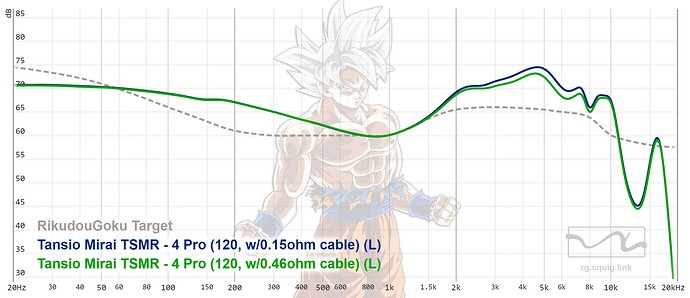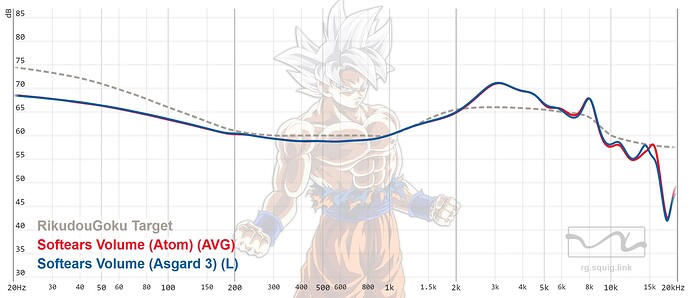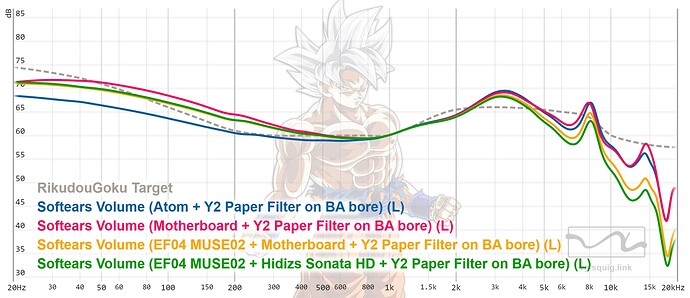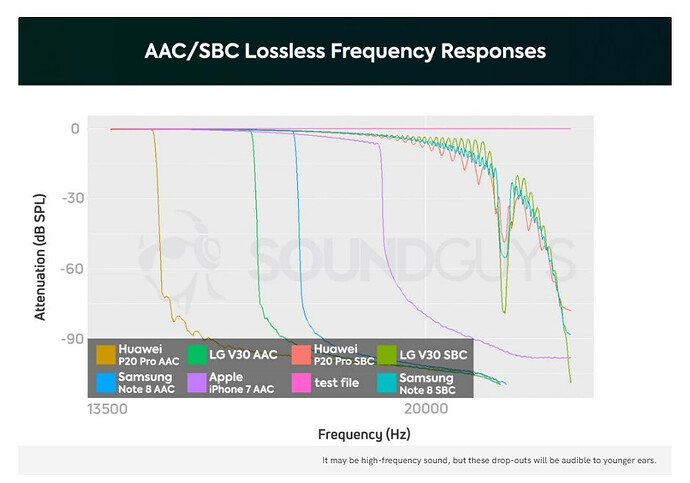I’m not sure of any. I bought the Top used and have had the UP for awhile now.
How does the Glamdring take to EQ-ing something like a tad more midbass?
I found an interesting difference in sources earlier today; maybe someone with more knowledge on this stuff can chime in, maybe I’m missing something here.
Directly comparing the BTR7 to the Topping L30 + Topping D10s stack at home, while the power increase is obvious plus some other benefits, I noticed this morning that the BTR7 actually is noticeably better on a few different areas, namely, texture. I’m not entirely sure if I can classify this as something in the dynamic range of both units, but songs like Pristine by Snail Mail have incredible texture in the opening distorted guitars while using the the BTR7 as a DAC/amp, more so than the stack on my desk. I’m wondering if it has something to do with the THX Amps built inside, and then that leads me down another rabbit hole - my eyes are again set on the FiiO K7 which also has THX amps built in, but the K7 has less power output than the L30 so maybe having both units wouldn’t be too redundant.
Again, I am a complete novice when it comes to the source stuff, and if I’m reading the specs incorrectly on either unit, I’ll be happy to listen and correct my statement above but it is something I’ve noticed. I’ll do some more listening and A/B comparisons in the coming days but I am truly fascinated with this now.
What iem have you used? Sorry to be that guy but - did you volume match properly?

No I understand - it’s a valuable question to ask. I don’t have a way to measure dBs admittedly. I volume matched using my ears, it’s definitely not a 10+ dB swing or something crazy like that - it’s very close in terms of volume.
In regards to what I mentioned above, I immediately noticed it. Again, I have no idea what it could be and I’m just looking to learn as much as possible. I assumed it had something to do with the actual hardware it self and how it processes the sound so-to-speak. But I could be totally wrong
One visible spec difference is relatively high output impedance of BTR7 (especially balanced) which could act as mini impedance adapter with transducers with non flat impedance curve like that one from TE zero red. It would be most visible in many hybrids, or BA heavy sets
Time to break out the EA500 and give it a 1DD test, Dom lol
That’s a very very good point. Interesting. From what I understand about output impedance, it makes sense that most of my IEMs also sound a touch warmer on the BTR7 and more “full”? If that makes sense. I didn’t realize the output impedance difference between the two are that huge - the L30 claims a <0.1 Ω output impedance compared to the BTR7 with… 2.8 Ω - that sounds significantly higher, but again, it could be not a big deal and I’m just looking into it too deeply.
Interesting.
I’ll run some tests at home and see if I can volume match the best I can, and try to use the “same” gain levels on both. @GooberBM makes a good point, the only single DD I’ve tried on it is the OG DM and admittedly, I haven’t listened to that IEM in quite some time on the BTR7 so I didn’t notice a huge difference.
Alright, thank you so much for your input, man (pun intended).
Fiio stuff usually has around 2ohm OI with balanced.
While topping usually is close to 0.1ohm.
This is what a difference of 0.3 ohm does to something VERY sensitive to OI/impedance changes.
Like @Rikudou_Goku said - there are some incredibly sensitive sets (the lower impedance the worse) like Andromeda, Craft ears Aurum or Softear Volume (see how that changes with just a source switch on nymz graphs)
Edit: I cannot overemphasize how much the volume matching is important - researches say that even 1dB of volume SPL difference can be perceived by ear as sounding better or worse. This hearing sensitivity varies with frequency and person to person, but it just makes ABing that much harder. It is not sexy as well ![]()
Forgot about the volume.
You can see how the volume (
That is a huge difference with only 0.3 Ω taken into account, damn…
@pylaczynski thanks for that link dude, that was actually my next question. I wonder if there’s something like a calculator I could use to EQ and actually see a change on a graph as that’s the easiest way my brain interprets things now a days.
I’ve also taken note of the sonic changes going from Bluetooth (AAC codec) to wired. I’m AAC mode, the sound has a noticeably warmer presentation. I’m not sure if output impedance changes depending on the connection you’re running with but that could be a start to an answer for the question I’ve had for months now.
If u mean a calculator for predicted FR of the iem + amp (oi change)? Yes there is.
With bluetooth codecs you have to take into consideration of the implementation/optimisation of the device with it as well as the codec used. Iphones for example got a much better AAC implementation than Android.
That’s exactly what I mean, thank you for that. I’ll be diving deep, trying to see if I can figure out and see some similarities with the IEMs I have on hand.
And absolutely - I do have an iPhone, which is the best codec for iPhone* Bluetooth when it comes to music listening afaik.
Thanks for your input, Riku. Always super helpful
It might have the best AAC implementation but from what I have read, from a technical aspect it doesnt beat LDAC
Sorry, I mistyped - yea that’s what I meant. AAC is best for the iPhone but I know there are other codecs that are technically better. My bad!
Haven’t tried it. To my understanding he’s already pushing the driver to its limit. The better idea would be if you want more midbass emphasis would just be to EQ down the subbass a bit. I can give it a try but, honestly I feel it would somewhat hurt the Magic of Glamdring. As a huge fan of midbass myself Glamdring hits so punchy and authoritative with great separation in the bass, one of the best I’ve heard, that’s it’s never left me feeling the need for more.






